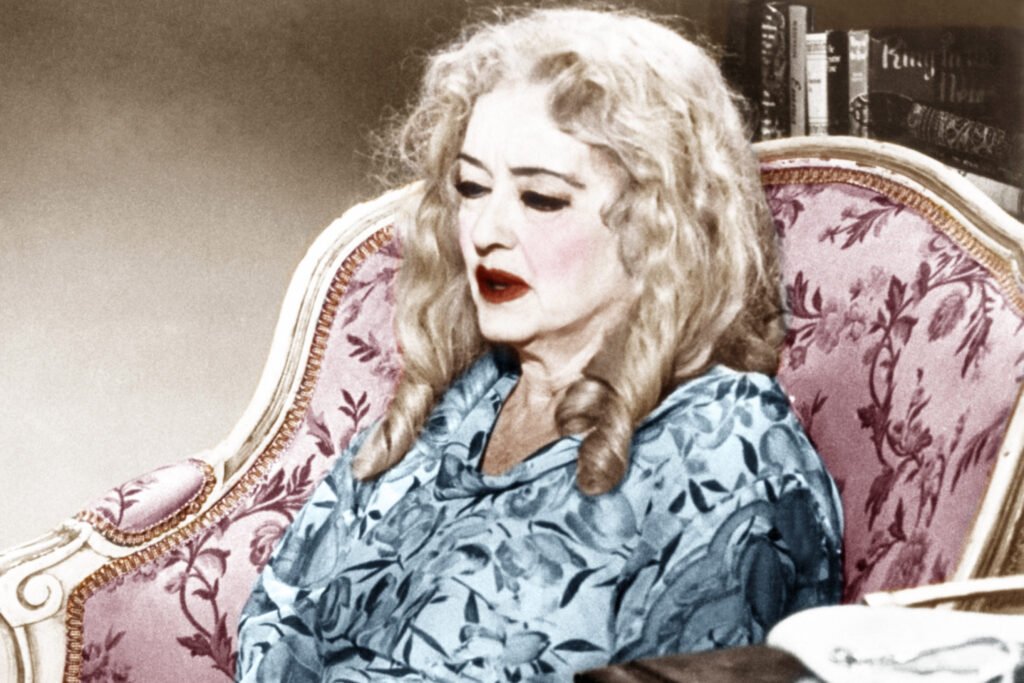Bette Davis once famously quipped, “Old age ain’t no place for sissies,” and she certainly proved that advancing years couldn’t diminish her formidable screen presence. While many Hollywood actresses found roles disappearing as they aged, Davis refused to fade away, instead delivering some of her most memorable performances in her later years. Her distinctive voice, those legendary eyes, and her willingness to embrace rather than hide the effects of aging allowed her to continue commanding the screen long after many of her contemporaries had retired. These fourteen performances, spanning from the 1960s until her final appearance before her death in 1989, demonstrate why Bette Davis remains the standard-bearer for actresses who refuse to be limited by Hollywood’s age prejudice.
1. “What Ever Happened to Baby Jane?” (1962)
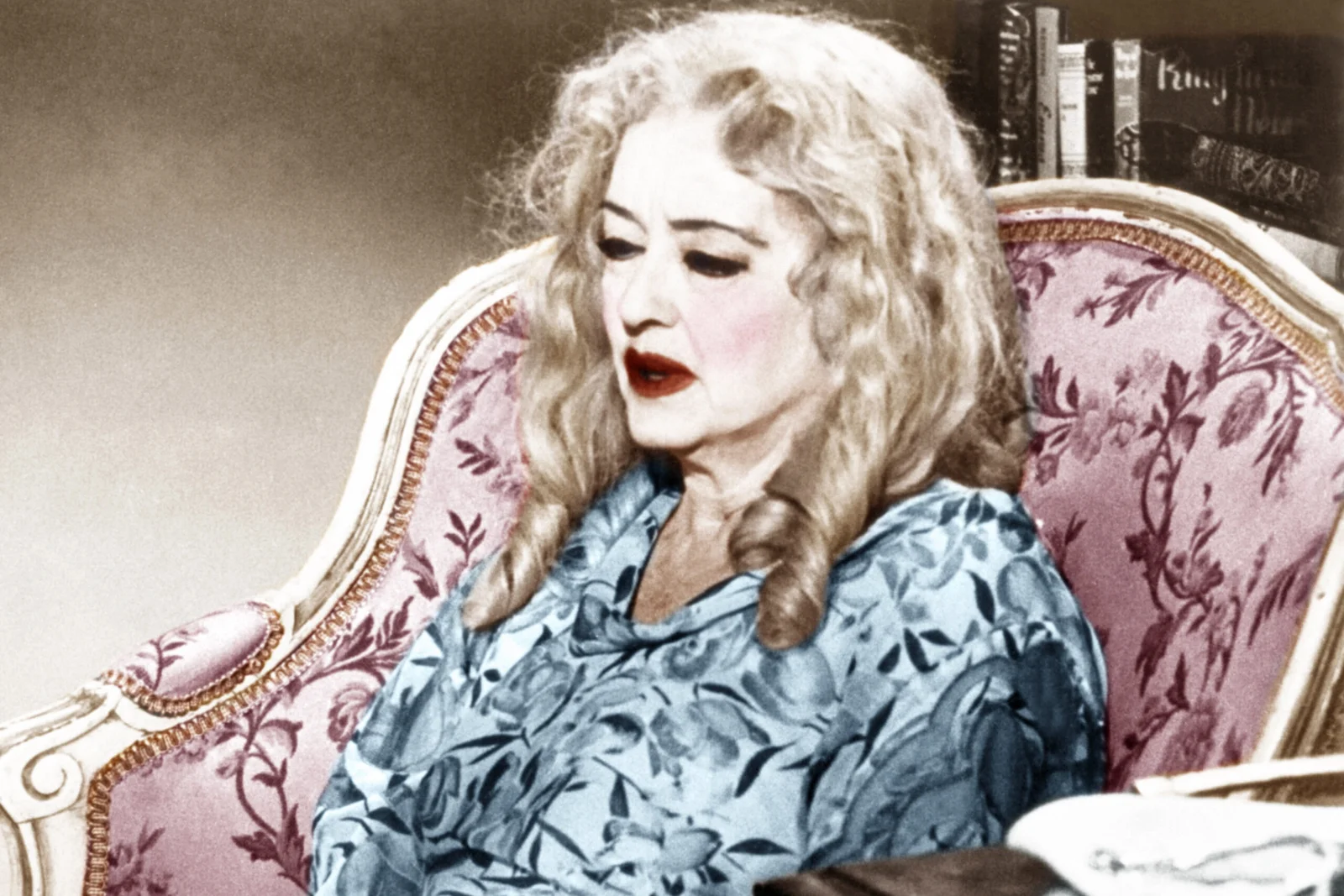
At 54, Davis fearlessly transformed herself into the disturbing, grotesque former child star Baby Jane Hudson, applying garish makeup and willingly making herself look far worse than her actual age. Her portrayal of the psychologically damaged, alcoholic Jane tormenting her wheelchair-bound sister (played by real-life rival Joan Crawford) showcased Davis’s complete lack of vanity and her commitment to character over appearance. The film’s success proved older actresses could still carry a picture when given substantial material, revitalizing her career and creating an entirely new genre of “psycho-biddy” films that would keep aging actresses employed for years to come. The Guardian still praises the film as being brilliant and shocking to this day.
The Academy recognized this career-redefining performance with a Best Actress nomination, her tenth overall. What makes this performance particularly remarkable is how Davis used her own aging face as an instrument, contrasting the grotesque Baby Jane makeup with moments when her character looked at old films of her younger self. The film’s success also demonstrated Davis’s shrewd business sense—she took a percentage of the profits instead of her usual fee, ultimately earning far more as the low-budget film became a surprise hit.
2. “Hush…Hush, Sweet Charlotte” (1964)

Following the success of “Baby Jane,” Davis stepped into the role of Charlotte Hollis, a reclusive Southern spinster suspected of murdering her married lover decades earlier. Originally planned as another pairing with Joan Crawford (who withdrew during production), the film became a showcase for Davis’s ability to alternate between vulnerable fragility and terrifying intensity. Her scenes opposite Olivia de Havilland (who replaced Crawford) demonstrated Davis’s mastery of psychological tension and her willingness to portray a character teetering on the edge of madness without slipping into caricature. Explore Louisiana dives into the rich character-driven plot that defines this film.
At 56, Davis brought unexpected nuance to what could have been merely another “crazy old lady” role, finding the wounded humanity beneath Charlotte’s deteriorating mental state. Director Robert Aldrich captured Davis’s still-expressive face in haunting close-ups that showcased her ability to convey decades of pain with minimal dialogue. The film’s commercial success further established that Davis had found a viable second act for her career, playing complex, psychologically damaged women who remained compelling despite—or perhaps because of—their advanced age and isolation.
3. “The Nanny” (1965)
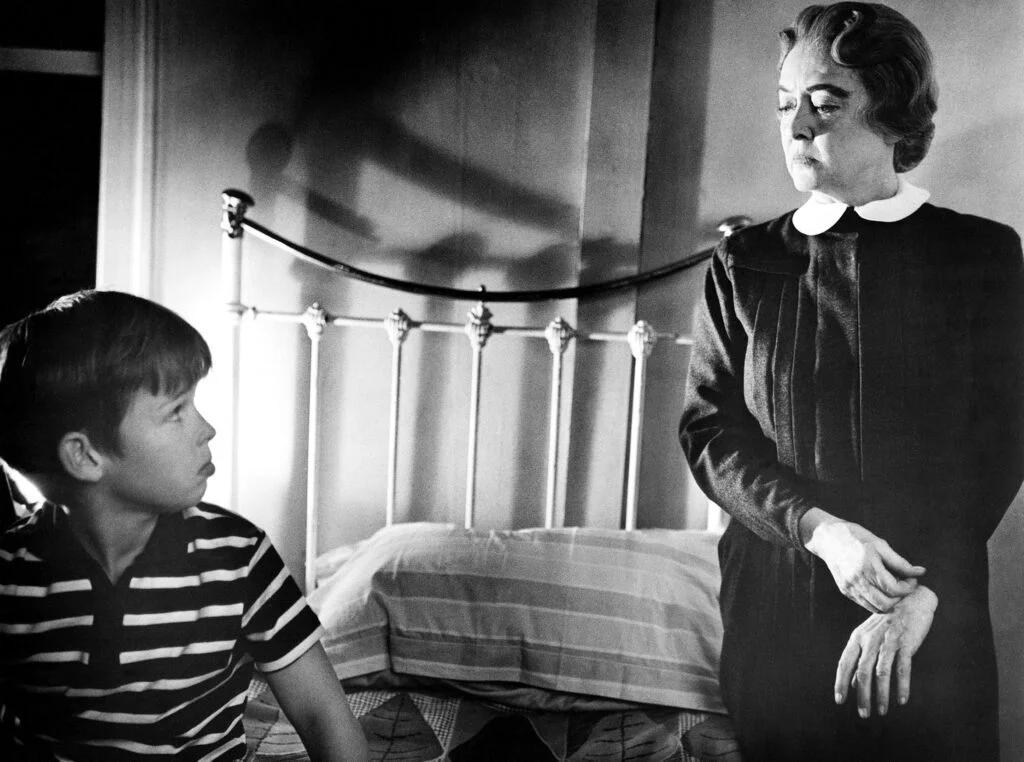
In this British psychological thriller, a 57-year-old Davis delivered a masterfully restrained performance as a seemingly devoted nanny who might be attempting to murder her young charge. Unlike her more flamboyant roles of this period, Davis used subtle facial expressions and quietly disturbing behavior to create mounting tension. Her ability to project both maternal warmth and underlying menace showcased her range, proving she could be just as effective with understatement as with the grand theatrical gestures for which she was known. The Final Girls praises it as a hidden gem among horror hits.
What makes this performance particularly noteworthy is how Davis manipulates the audience’s sympathies, initially appearing as a victim of a troubled child’s accusations before slowly revealing darker aspects of her character. Director Seth Holt repeatedly frames Davis’s face in shadow, using her famous eyes to unsettling effect as she watches her young charge. This performance demonstrated Davis’s continuing ability to surprise audiences who thought they knew what to expect from her, showing new dimensions to her craft even well into her fifth decade as an actress.
4. “Dead Ringer” (1964)
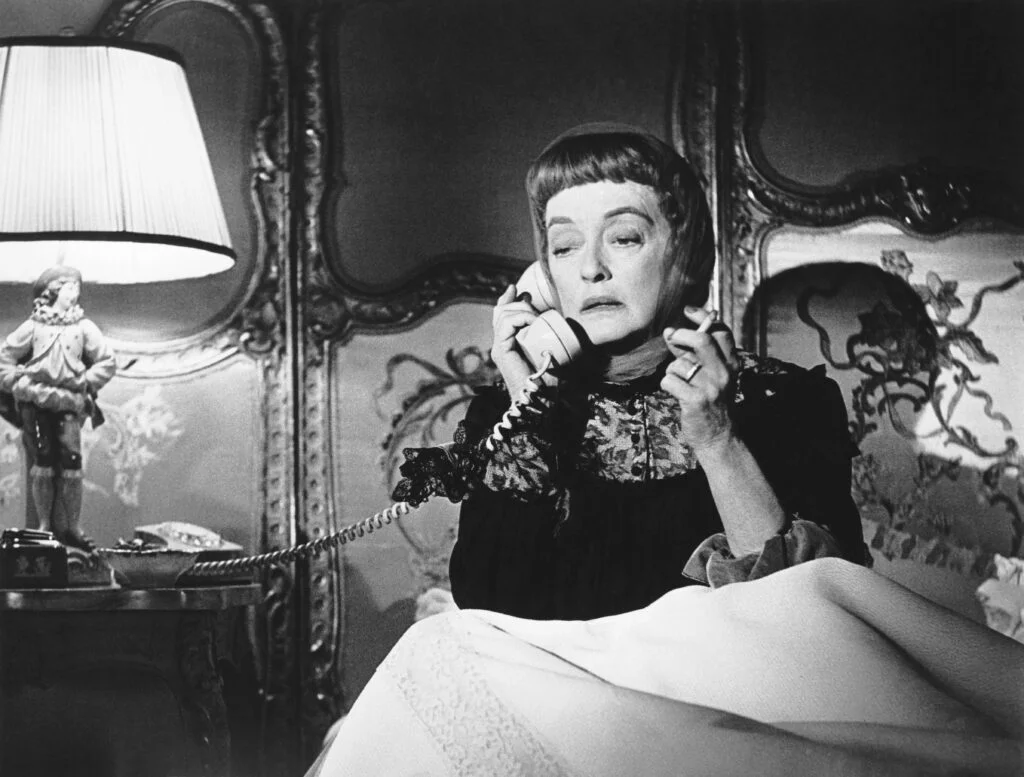
Davis took on the challenging dual role of identical twins—downtrodden barmaid Edith and her wealthy, murderous sister Margaret—demonstrating her technical skill and versatility at age 56. The performance required her to create two distinctly different characters and then show one character impersonating the other, a layered acting challenge that showcased her meticulous attention to detail. Through subtle differences in posture, vocal inflection, and manner, Davis made each sister immediately distinguishable even when wearing identical clothing and hairstyles.
Director Paul Henreid (Davis’s former co-star from “Now, Voyager”) utilized then-innovative split-screen techniques to show Davis effectively acting opposite herself in several key scenes. The film allowed Davis to exercise her full range, from cold calculation to desperate panic, while also providing commentary on how different life paths affect identical twins—one hardened by poverty, the other corrupted by privilege. This underappreciated gem in Davis’s filmography demonstrates her willingness to tackle technically demanding roles that would challenge actresses of any age.
5. “The Anniversary” (1968)

As the one-eyed, monstrously manipulative matriarch Mrs. Taggart, Davis delivered one of her most deliciously wicked performances at age 60. Sporting a distinctive eye patch and delivering venomous dialogue with obvious relish, she portrayed a mother who systematically tortures her adult sons and their partners during an anniversary gathering. Davis embraced the theatrical nature of this role based on a stage play, making the character’s psychological cruelty both horrifying and darkly humorous through her impeccable timing and delivery.
What could have been merely a camp performance becomes something more substantial through Davis’s ability to suggest the profound insecurity and fear of abandonment beneath Mrs. Taggart’s monstrous behavior. Director Roy Ward Baker wisely kept the camera on Davis whenever possible, allowing her expressive face and commanding presence to dominate every scene. This performance exemplifies Davis’s fearlessness in portraying thoroughly unlikable characters while finding the human motivation that makes them comprehensible, if not sympathetic.
6. “Connecting Rooms” (1970)
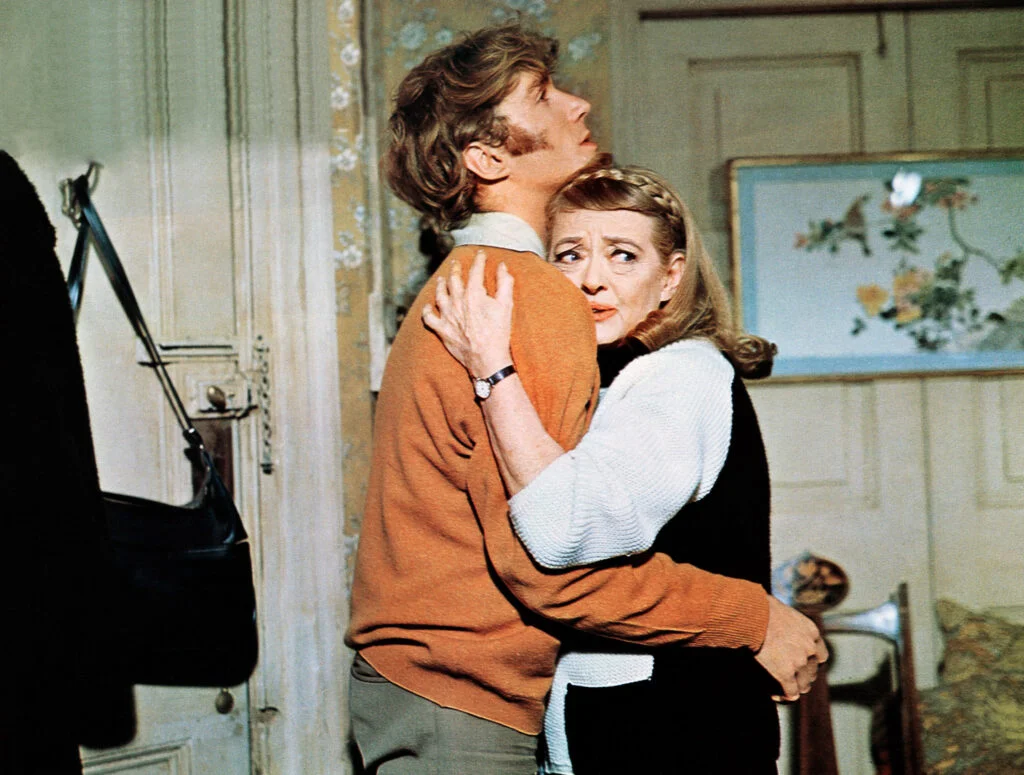
In this small British drama, Davis showed her capacity for quiet dignity as Wanda Fleming, an aging former concert pianist reduced to working as a music teacher while living in a boarding house. At 62, Davis set aside the grandly theatrical style of her horror roles to deliver a performance of restrained emotion and subtle grace. Her scenes opposite Alexis Kanner as the young man she befriends reveal Davis’s ability to convey a lifetime of disappointment and resilient hope through the smallest gestures and glances.
The film, while not widely seen, showcases Davis’s range and her willingness to take on smaller, character-driven roles that explored the realities of aging and diminished circumstances. Her performance captures the particular poignancy of a woman whose artistic gifts have gone unrecognized, a theme that perhaps resonated with Davis as she herself navigated the challenges of finding suitable roles in her seventh decade. Despite limited screen time, Davis dominates the film through the quiet authority she brings to every scene, demonstrating how her screen presence remained undiminished by age.
7. “Burnt Offerings” (1976)
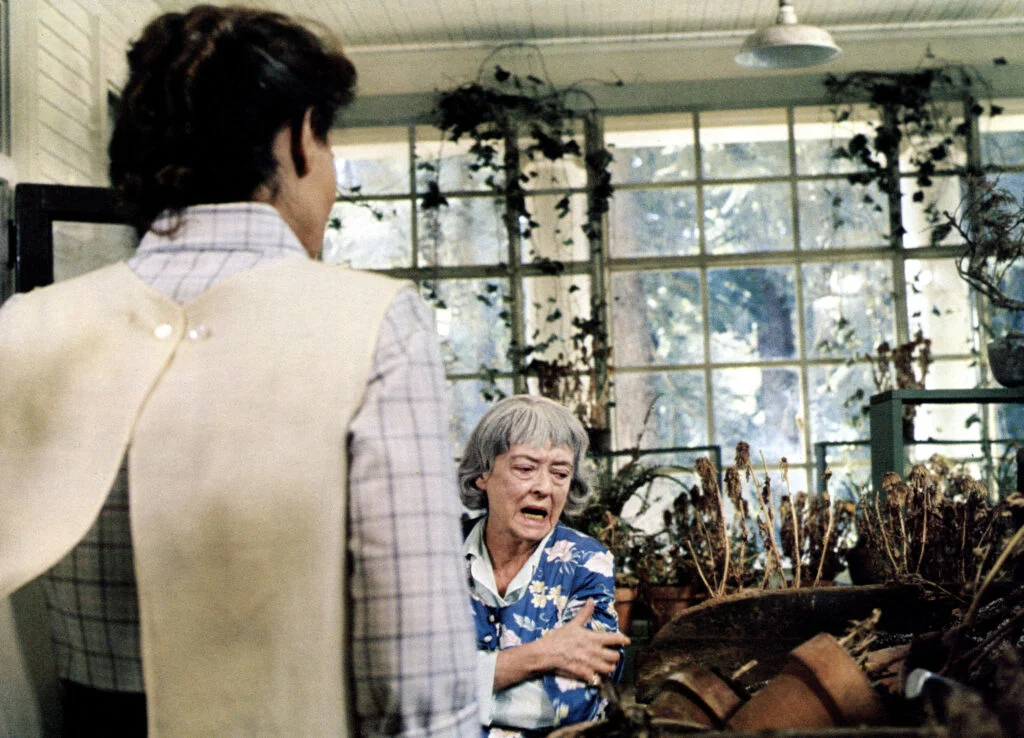
As the eerily cryptic Aunt Elizabeth, Davis created a memorably unsettling presence in this atmospheric horror film at age 68. Though not the lead role, her performance as an elderly woman who mysteriously regains vitality as the house she’s staying in claims its victims demonstrates Davis’s ability to communicate volumes through minimal dialogue and subtle physical transformation. Her scenes showing Elizabeth’s gradual rejuvenation provide some of the film’s most effective and disturbing moments, accomplished through changes in posture, vocal energy, and facial animation rather than obvious makeup effects.
Davis’s collaboration with director Dan Curtis (creator of “Dark Shadows”) resulted in a performance that balances supernatural undertones with psychological realism. The film allowed Davis to work alongside fellow veteran Hollywood star Burgess Meredith, creating a fascinating subtext of aging Hollywood royalty playing characters experiencing unnatural rejuvenation. This supporting role confirmed Davis could command attention even in limited screen time, making each scene count through her impeccable timing and the weight of her accumulated screen history.
8. “Return from Witch Mountain” (1978)
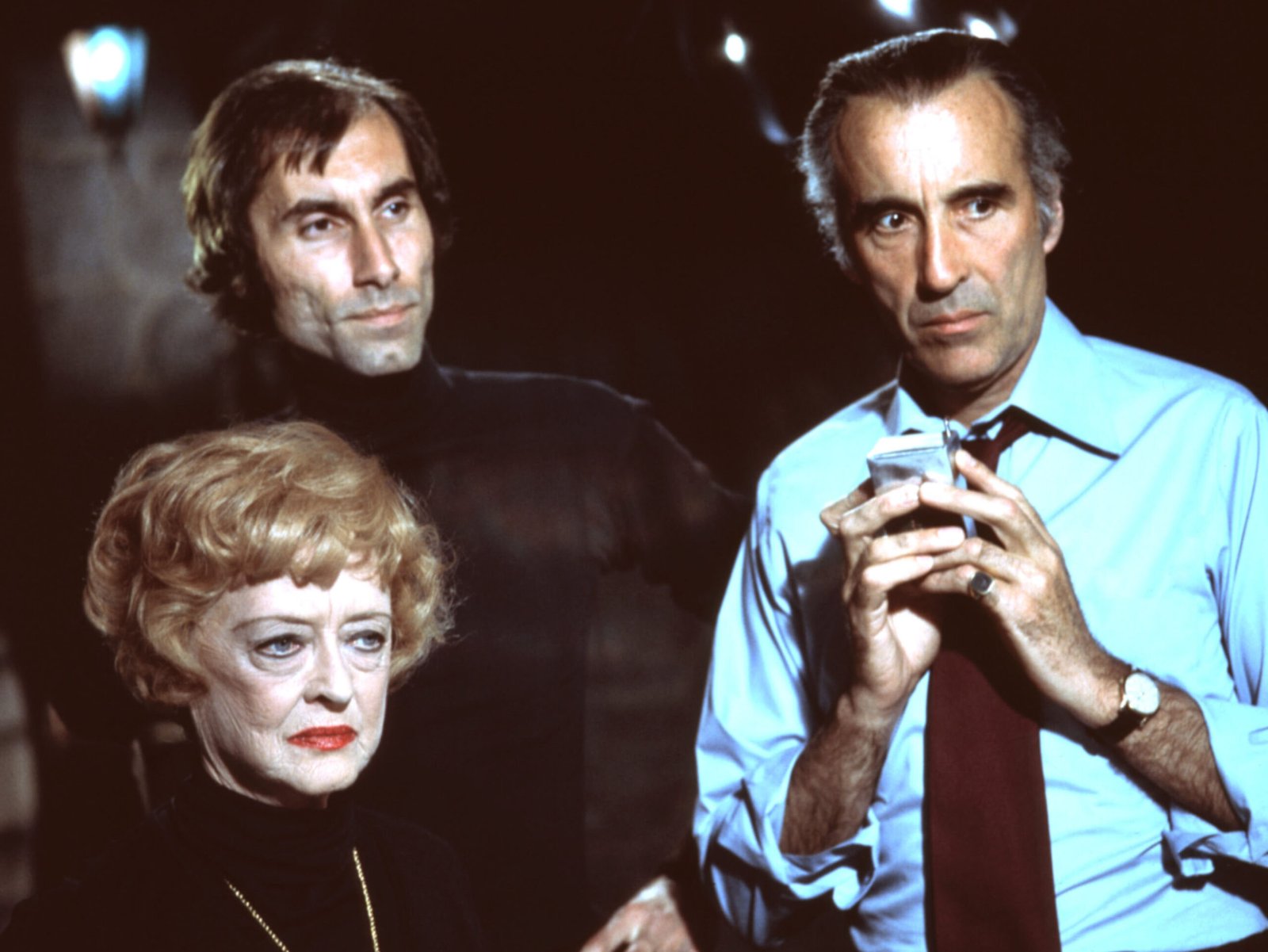
Davis demonstrated her versatility by venturing into family entertainment as the villainous Letha Wedge in this Disney adventure sequel at age 70. Paired with Christopher Lee, she gleefully embraced the chance to play a delightfully hammy villain attempting to exploit children with supernatural powers. Her performance showcased her comedic timing and self-awareness, proving she could captivate younger audiences while delivering knowing winks to adults familiar with her more serious work.
What could have been a paycheck role became something more enjoyable through Davis’s commitment to giving children a properly theatrical villain worth rooting against. Director John Hough captured Davis’s evident enjoyment in scenes where she got to deliver melodramatic threats and reactions with cartoonish flourish. This performance revealed Davis’s lack of artistic pretension and her understanding that different genres require different performance styles, displaying the adaptability that had kept her career viable across changing Hollywood eras.
9. “Death on the Nile” (1978)
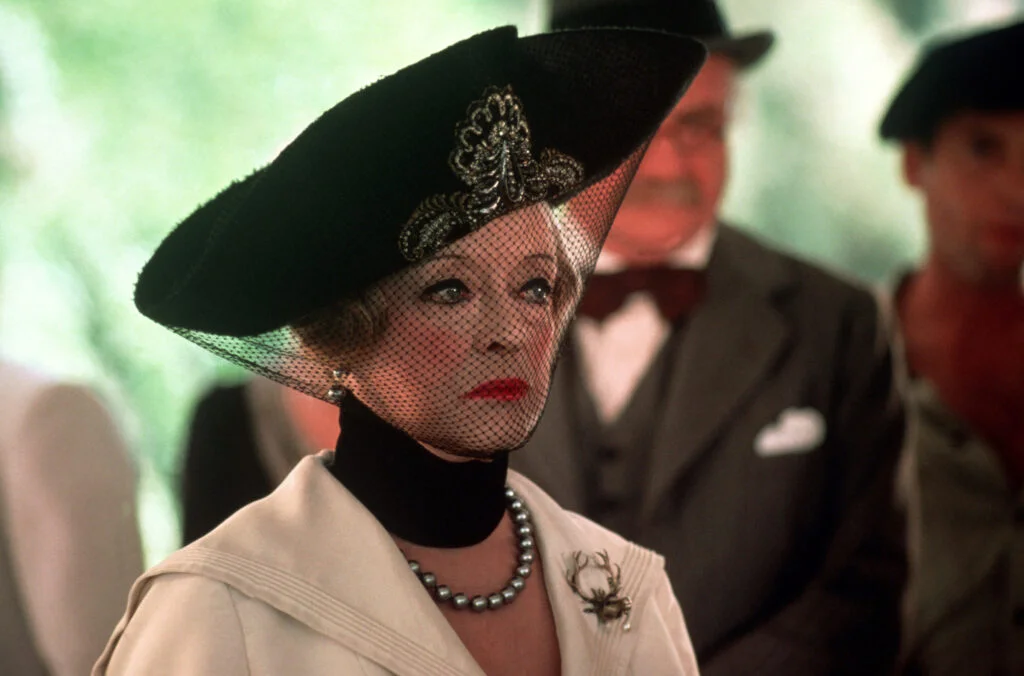
As the wealthy, kleptomaniac American tourist Mrs. Van Schuyler in this Agatha Christie adaptation, Davis delivered a scene-stealing supporting performance at age 70. Outfitted in extravagant period costumes and jewelry, she created a memorably eccentric character whose sharp tongue and imperious manner provided both comedy and red herrings in the murder mystery plot. Her scenes opposite Maggie Smith as her paid companion showcase Davis’s impeccable comic timing and her ability to suggest complex relationships through the subtlest inflections.
Director John Guillermin surrounded Davis with an all-star cast including Peter Ustinov, Mia Farrow, and Angela Lansbury, yet her performance remains distinctly memorable among this distinguished ensemble. The film allowed Davis to demonstrate her continuing mastery of the telling character detail—the way Mrs. Van Schuyler’s eyes light up at the sight of something she might steal, or her performative fragility when it suits her purposes. This delightful character part proved Davis could excel in the grand tradition of character actresses who enliven films through vivid supporting roles.
10. “The Whales of August” (1987)
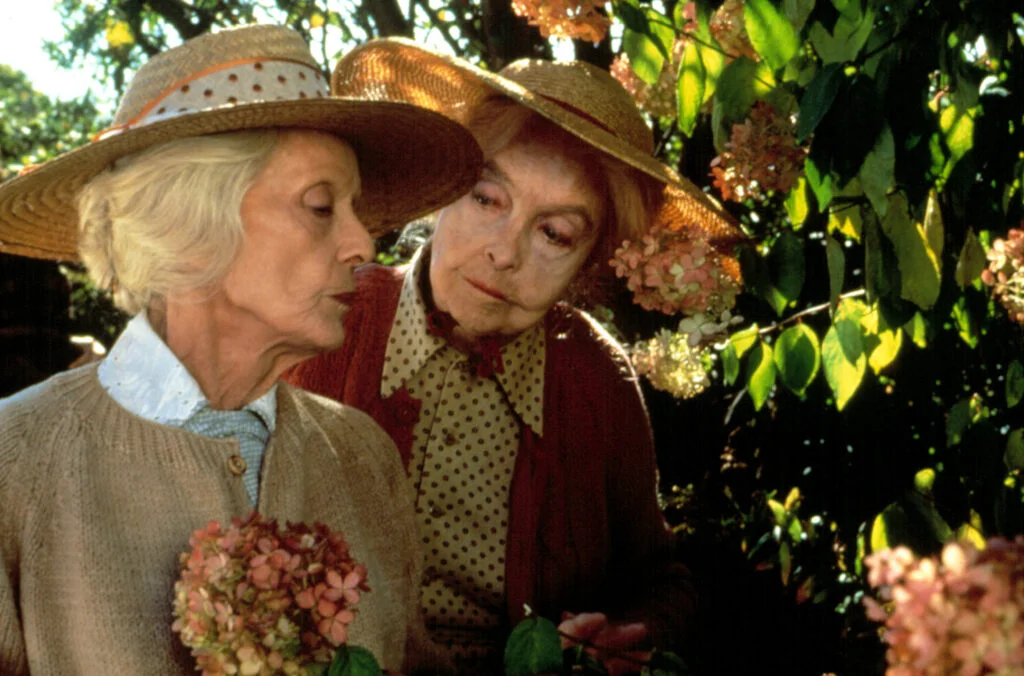
In her penultimate film role at age 79, Davis delivered a performance of remarkable subtlety and power as the blind sister Libby Strong, living with her more optimistic sibling Sarah (played by Lillian Gish) in a seaside Maine cottage. Despite her own failing health, Davis captured the complex emotions of a proud woman facing the indignities of age and dependency with a performance stripped of theatricality or sentimentality. Her scenes with the 93-year-old Gish created a unique cinematic document—two pioneers of film acting, with careers stretching back to the silent era, demonstrating their enduring artistry.
Director Lindsay Anderson captured Davis’s still-expressive face in lingering close-ups that reveal the intelligence and emotional depth she brought to this elderly character confronting mortality. The film’s quiet contemplation of aging provided Davis with material worthy of her talents late in life, allowing her to create a character whose frustration and occasional bitterness feel earned rather than performative. This critically acclaimed performance earned Davis her final BAFTA nomination and stands as testament to her artistic integrity and continuing growth as an actress even in her eighth decade.
11. “Wicked Stepmother” (1989)
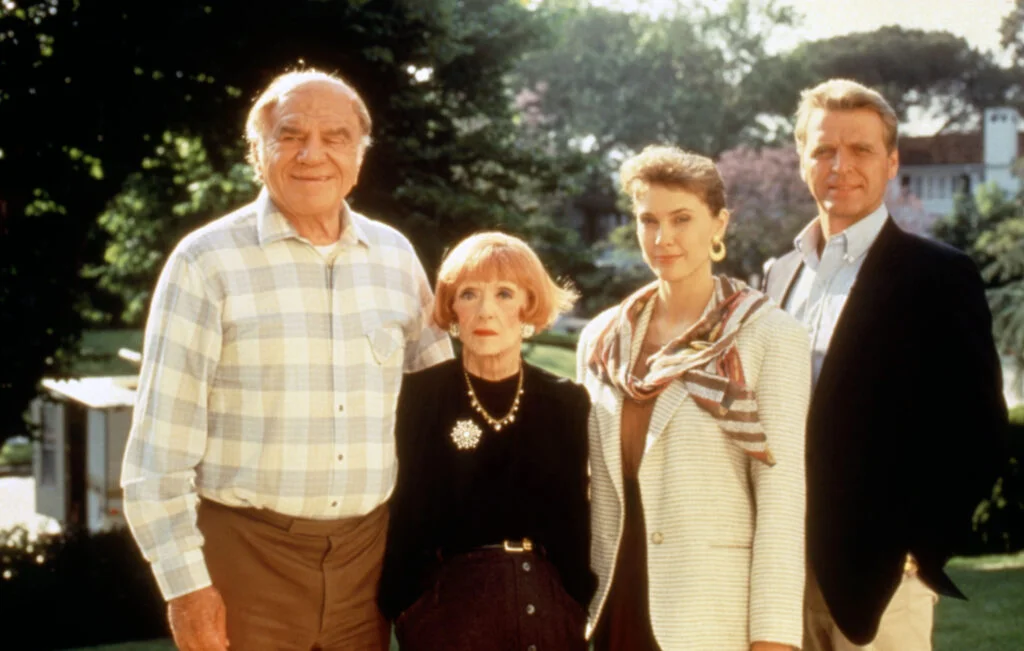
Davis’s final film appearance at age 81 offers a bittersweet coda to her remarkable career, as declining health forced her to withdraw after filming only a portion of her scenes as the mysterious Miranda Pierpoint. Though the resulting production (which attempted to explain her character’s disappearance through a supernatural plot device) was not the farewell her career deserved, Davis’s brief appearance still showcases flashes of her signature intensity and theatrical delivery. Despite obvious physical frailty, her scenes demonstrate her determination to continue working and her lifelong commitment to her craft.
Director Larry Cohen later revealed that Davis had approached the comedic role with professional seriousness, making script suggestions and planning characterization details before health issues forced her departure. Even in these fragmentary final scenes, Davis’s distinctive voice and expressive eyes remain captivating, a testament to the irreducible star quality that had sustained her seven-decade career. This final performance, completed just months before her death in October 1989, serves as a poignant reminder of Davis’s indomitable spirit and her refusal to retire even when her body began to fail her.
12. “The Star” (1952)
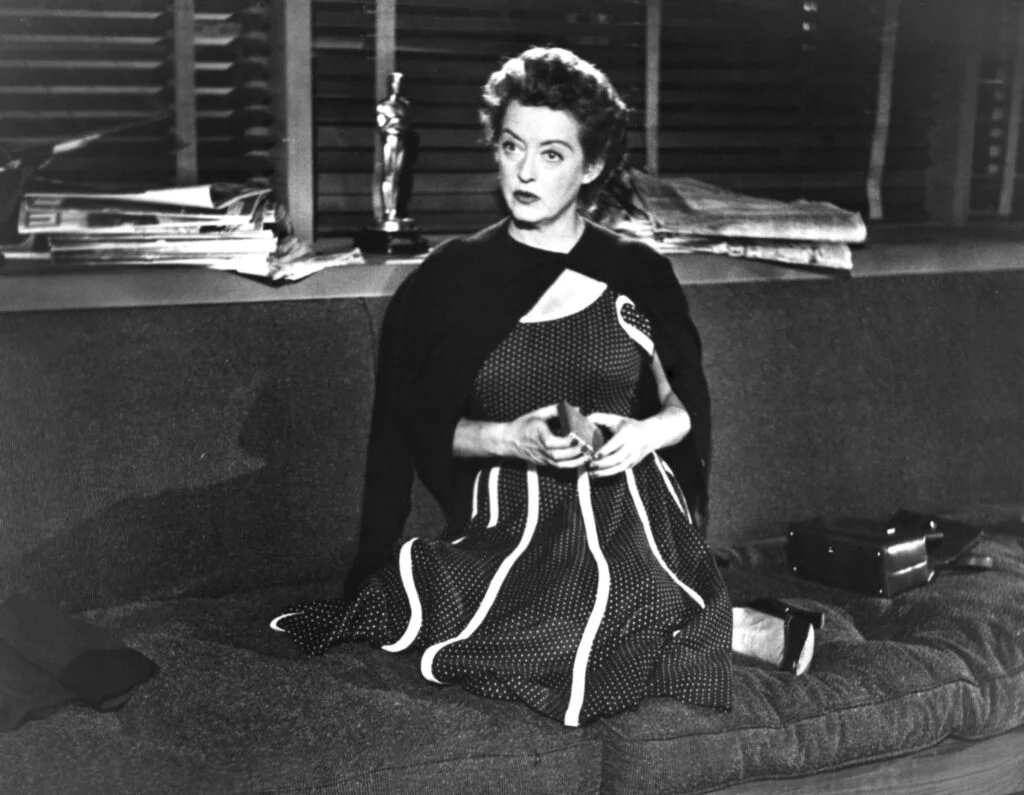
Though earlier than the other performances on this list, this film merits inclusion because at 44, Davis boldly portrayed a washed-up actress in her 50s struggling with the reality that Hollywood no longer wanted her. The performance proved remarkably prescient about challenges Davis herself would face in coming decades, showing her clear-eyed understanding of the industry’s treatment of aging actresses. Her portrayal of Margaret Elliot—pawning her Oscar for grocery money and desperately seeking roles for which she’s no longer suited—earned Davis an Academy Award nomination for its raw honesty.
Director Stuart Heisler captured Davis’s willingness to appear desperate, disheveled, and pathetic without ever losing the audience’s investment in her character’s struggle. This performance represents Davis’s artistic manifesto—her commitment to truth over vanity and her determination to confront Hollywood’s age and gender biases directly through her work. The film serves as a bridge between Davis’s earlier career and her later renaissance, demonstrating the self-awareness that would allow her to continue finding meaningful roles when many of her contemporaries could not.
13. “Strangers: The Story of a Mother and Daughter” (1979)
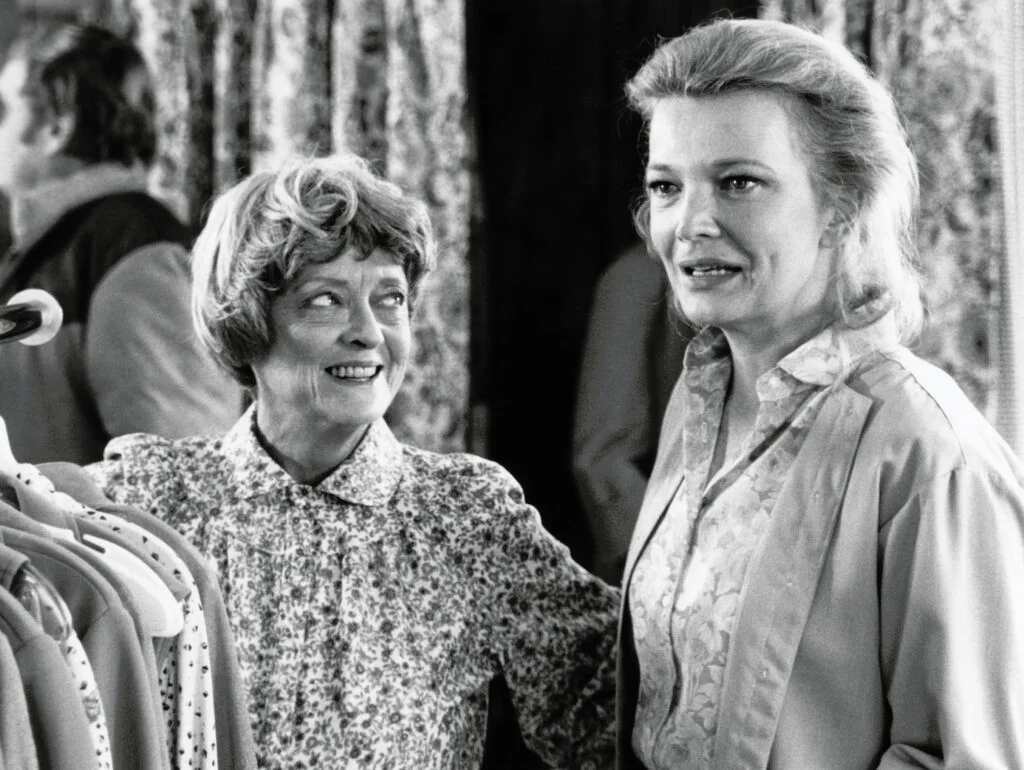
In this television film that paired her with Gena Rowlands, a 71-year-old Davis delivered a nuanced performance as an estranged mother reuniting with her daughter when she requires surgery. Without resorting to manipulative sentimentality, Davis captured the complex emotions of a proud woman forced to depend on the daughter from whom she’s been distant for decades. Her chemistry with Rowlands creates a believable mother-daughter dynamic filled with unresolved tensions and tentative reconciliation.
Director Milton Katselas gave Davis room to explore the physical vulnerability of a character facing serious health issues while maintaining her essential dignity and autonomy. The performance earned Davis an Emmy nomination and demonstrated her continuing ability to adapt her acting style to the more intimate requirements of television drama. This portrayal stands as one of Davis’s most moving later characterizations, balancing her character’s difficult personality with moments of genuine warmth and regret as she attempts to rebuild a relationship before it’s too late.
Bette Davis’s late-career performances collectively demonstrate why she remains the gold standard for actresses navigating the challenging terrain of aging in Hollywood. Unlike many stars who fade away or compromise their artistic standards as roles diminish, Davis reinvented herself repeatedly, finding new dimensions to explore and new audiences to captivate well into her eighties. Her fearlessness in portraying the realities of aging—from the grotesque to the poignant—paved the way for later generations of actresses demanding substantive roles throughout their lives. As Davis herself put it with characteristic bluntness: “You just have to know the joy of life and that it continues—whether behind the screen or in front of it.” Through these fourteen remarkable performances, she proved that artistic growth need not be limited by age, leaving behind an incomparable legacy of late-life work that continues to inspire.

